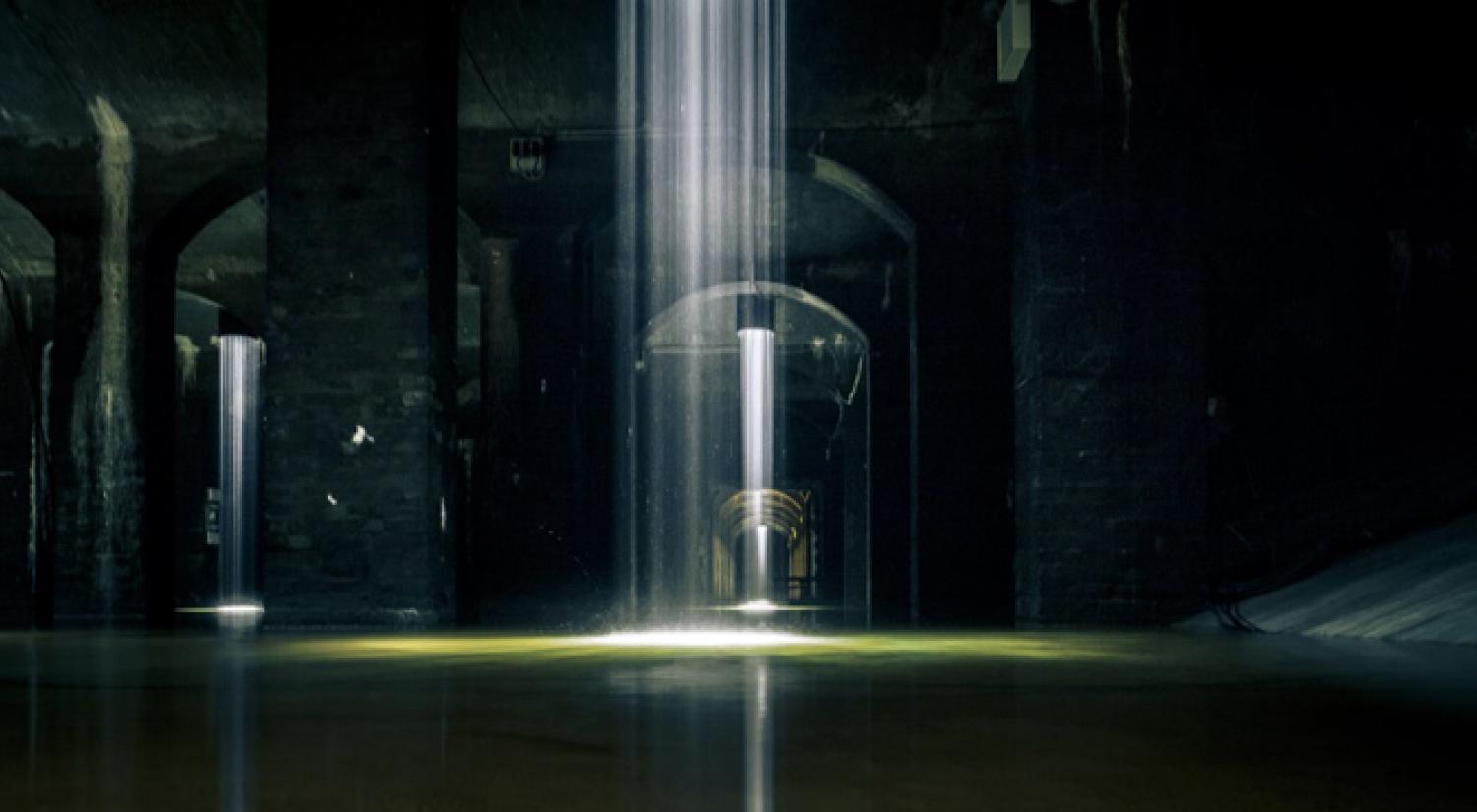Thirty-three years after the Cisterns were drained, the water returned to the 4,320-square-metre reservoir underneath Søndermarken Park. With H, Ingvar Cronhammar created a site-specific total installation driven by the challenges presented by the site and the climate. The exhibition was open from 3 March through 29 November 2015 but lives on in the catalogue, authored by architecture theorist Carsten Thau.
A sensuous engine room
The exhibition H unfolded as a simultaneously seductive and machine-like artwork in the unique setting at the Cisterns. On their way into Cronhammar’s total installation, visitors first passed through a room where they were inundated with the sound of chanting and ethereal voices from a piece of music created especially for the exhibition by composer Martin Hall (b. 1963). Next, the voices were replaced by the constant sound of rushing water, amplified and distorted by the unusual acoustic environment of the Cisterns. The installation surrounded the visitors with water in the form of a water surface that covered the entire floor, columns of luminescent, falling water and, not least, the water mist that filled the room like a haze. H thus took the audience on a journey into an alien and undefinable engine room where both visual and auditory aspects were put into play.
Publication
Cronhammar’s early works incorporated a variety of natural phenomena. In his exhibition at the Cisterns, the encounter is of a different nature. The structural intervention that the installation constitutes underscores the nature of the Cisterns as a raw, unpolished grotto, where nature slowly but persistently forces its way in. The water seeps through the concrete, and stalagmites and stalactites emerge as the visible evidence of this erosive process. Thus, the work operates both as a total installation and as a sculptural and architectural intervention into the catacomb-like space of the Cisterns, an exhibition venue space that differs radically from the familiar white cube. According to the artistic director of the Cisterns, Astrid La Cour, the work possesses a complexity that deserves the sort of expanded examination that a publication can offer.
‘It is very important for the dissemination and understanding of Ingvar Cronhammar’s exhibition and the continuous development of the Cisterns that this ambitious exhibition is documented and put into a larger perspective,’ says Astrid La Cour. She adds,
‘The exhibition gave the visitor an immediate sensuous experience in the dark, but at the same time, it is crucial to the communication – and the understanding – of the gravity of the exhibition to have the benefit of a reflective in-depth text that adds perspective and takes research-oriented soundings of the field between art and architecture.’
In the catalogue text, Thau navigates freely among the many interfaces between art, cultural theory and architecture, contextualizing the H exhibition with a historical look at the Cisterns’ former function as a water reservoir and discussions of themes such as ‘the subterranean’ and ‘the labyrinth’. Thau’s analysis is not restricted to H but also addresses other works by Cronhammar in an expansive reflection on recurring motifs and concepts in Cronhammar’s practice as well as machine, industrial and futurist aspects.



